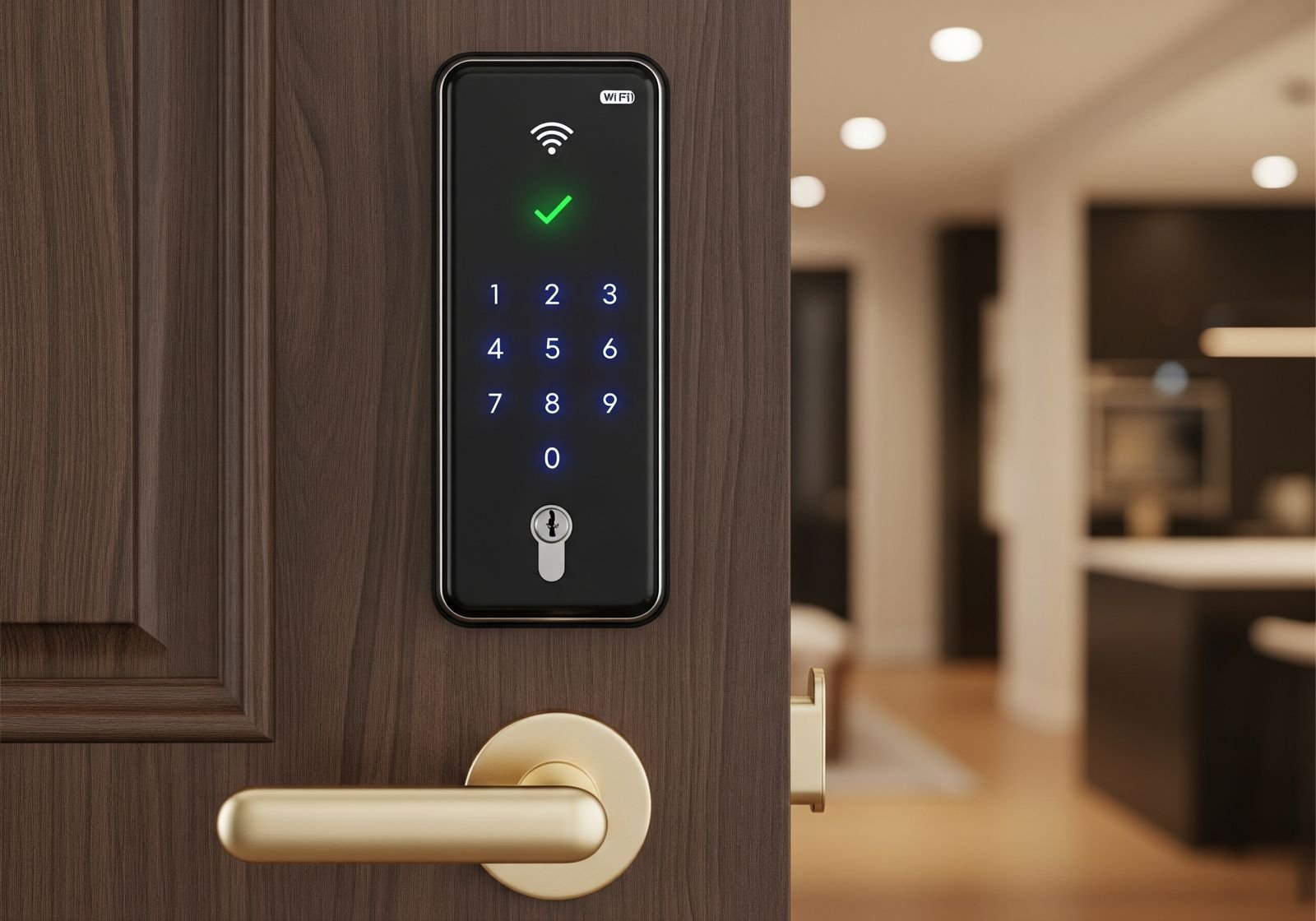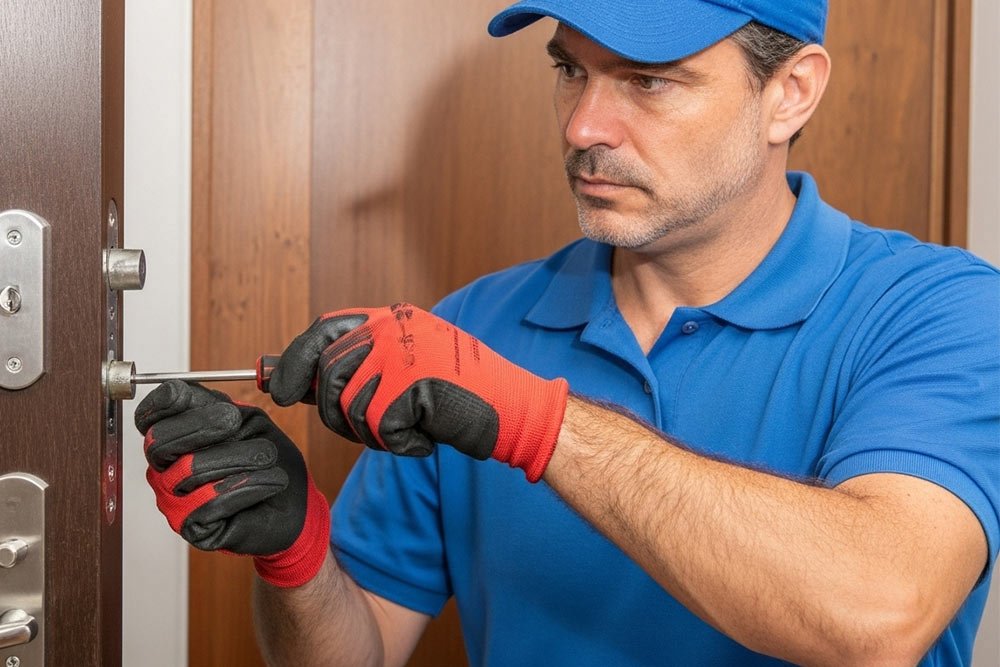Discovering a key stuck in a lock can be an unexpectedly frustrating experience, often occurring at the most inconvenient times. Whether it’s your front door, car, or a storage unit, a key stuck in a lock can throw a wrench in your plans. Addressing this issue promptly is crucial to avoid further damage to the lock or the key itself.
In this article, we will delve into the causes of keys getting stuck, the step-by-step process to safely remove them, how to deal with more complex situations, and preventive measures to avoid this inconvenience in the future.
Understanding the Causes of a Stuck Key
Before attempting to remove a stuck key, it’s important to understand what might have caused the problem in the first place. Several factors can contribute to a key getting stuck:
| Jammed Pins or Tumblers within the Lock Mechanism | Over time, locks can accumulate dirt, dust, and grime. This buildup can cause the pins or tumblers inside the lock to become jammed, preventing the key from smoothly turning. |
| Misalignment of Lock Components | Locks can sometimes become misaligned due to regular use, changes in temperature, or physical force. When the lock components are not aligned correctly, inserting or turning the key can become a struggle. |
| Bent or Damaged Key | Keys are not invincible; they can bend or suffer damage from excessive force or accidents. A bent key might not properly fit into the lock, leading to it getting stuck. |
| Debris or Foreign Objects Inside the Lock | Small particles, such as dirt, metal shavings, or even a broken piece of a previous key, can find their way into the lock and obstruct the smooth functioning of the mechanism. |
Steps to Safely Remove a Stuck Key
Step 1: Stay Calm and Avoid Excessive Force
When you encounter a stuck key, the first instinct might be to forcefully yank it out. However, this can cause further damage to both the lock and the key. Instead, take a deep breath and proceed methodically.
Step 2: Lubrication
Using Graphite Powder or Silicone Spray: Lubrication is often the key to resolving a stuck key situation. Graphite powder or silicone spray can be applied to the lock to reduce friction and help the key slide out smoothly. Graphite powder, in particular, is known for its excellent lubricating properties.
Graphite powder, a dry lubricant, works by filling in the gaps within the lock mechanism, allowing for smoother movement. To apply, insert the nozzle into the keyhole and squeeze a small amount of powder. Gently insert and remove the key multiple times to distribute the lubricant.
Silicone spray is another effective option, providing a thin, slippery layer that helps the key glide out. It’s important to avoid using WD-40 or oil-based lubricants, as they can attract dirt and worsen the situation.
Step 3: Jiggling and Gentle Manipulation of the Key
If lubrication doesn’t immediately free the key, try gently jiggling the key while applying slight pressure to turn it. The goal is to encourage any stuck pins or tumblers to dislodge and allow the key to turn.
When jiggling, avoid excessive force that might lead to the key breaking inside the lock. Instead, use controlled, small movements while trying to turn the key simultaneously.
Step 4: Tapping the Lock and Key Assembly
If jiggling doesn’t work, tapping the lock and key assembly might help dislodge any stuck components. Use a non-marring tool, like a rubber mallet or a wooden dowel, to tap the lock gently. The impact can help release any jammed pins or tumblers.
It’s important to exercise caution and avoid applying excessive force, as heavy impacts can damage the lock further. Tapping should be done gently and with precision.
Addressing Advanced Stuck Key Situations
| Partially Broken Key Inside the Lock | In some cases, the key might break inside the lock, leaving a fragment stuck. To address this situation, use needle-nose pliers or tweezers to carefully grip the broken piece and pull it out. If this proves difficult, seeking professional assistance from a locksmith is advisable to avoid causing more damage. |
| Bent or Damaged Key | If the key is visibly bent or damaged, attempting to force it out might not be the best approach. Evaluate the key’s condition and consider repair or replacement. Continuing to use a damaged key can lead to repeated stuck key incidents and potential lock damage. |
| Foreign Object or Debris Inside the Lock | If you suspect that a foreign object or debris is causing the issue, use a thin tool, such as a toothpick or a straightened paperclip, to gently probe the lock and dislodge the obstruction. Alternatively, using an air duster can help blow away loose particles. |
When to Seek Professional Help
While these DIY methods can often resolve a stuck key situation, there are instances where professional assistance is the best course of action:
✔ If the key remains stuck despite your efforts.
✔ If a broken key fragment is deeply lodged and difficult to retrieve.
✔ If you’re unsure about using the DIY methods and risk causing more damage.
Preventive Measures to Avoid Key Sticking
To minimize the chances of encountering a stuck key in the future, consider these preventive measures:
- Regular Maintenance and Cleaning of Locks – Periodically clean your locks to remove dirt, dust, and debris that can hinder their performance.
- Using Quality Keys – Invest in well-made keys to reduce the likelihood of them bending or breaking. Avoid using excessive force while turning keys.
- Proper Storage and Handling of Keys – Avoid placing heavy objects on top of keys, which can lead to bending. Also, avoid using keys for purposes other than their intended function.
- Periodic Inspection by a Locksmith – Schedule periodic inspections by a professional locksmith to identify and address any emerging issues before they lead to a stuck key situation.
Navigate Lock Woes with Skill and Care
Dealing with a stuck key in a lock might seem daunting, but armed with the right knowledge and techniques, it’s a situation that can be resolved safely and effectively. Remember to stay calm, avoid excessive force, and utilize lubrication and gentle manipulation techniques.
For more complex situations, don’t hesitate to seek the assistance of a professional locksmith. By adopting preventive measures and maintaining your locks properly, you can minimize the chances of encountering this inconvenience in the future and ensure smooth access to your spaces.





